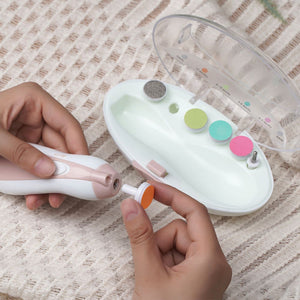If you go past your due date
Your due date has been set earlier in your pregnancy. Here in Denmark, it is usually determined during the nuchal translucency scan. If you do not have this scan, a date is instead calculated based on the first day of your last menstrual period. The due date is not a certain date, but it gives an indication of when you are expected to give birth. If the birth occurs within a period of up to 3 weeks before and 2 weeks after the due date, it is considered a term birth.
If you are more than two weeks past your due date
If you go more than two weeks past your due date, there is an increased risk that the placenta may start to function poorly, and it may therefore be necessary to induce labor to prevent harm to the baby. The baby usually does not gain more weight if it remains in the womb after those two weeks anyway.
When you are about a week overdue
There has been much disagreement and discussion among doctors and midwives over the years about when it is best to induce labor for pregnant women who are overdue. Fortunately, they have now come to an agreement.
After thorough considerations and comparisons with other countries in Europe, it was agreed in 2011 to offer induction to pregnant women who are 7-12 days overdue. Previously, it was said that pregnant women should go the full two weeks. At most delivery locations, there is an effort to ensure that the pregnancy is concluded within week 42, which is why induction of labor is offered in week 41 + 3-5 days.
The discussion has revolved around whether we can maintain healthy women's uncomplicated pregnancies and uncomplicated births when we start labor after just one week. It should be noted, however, that the risk of stillbirth in healthy women is extremely unlikely. However, there may be a greater risk of a complicated birth for women with a BMI over 35, or for women over 40 years old, pregnant women with pregnancy-induced hypertension, or pregnant women whose baby is not growing adequately. In these cases, induction is usually offered earlier.
Birth within 48 hours
Induction is a process where an attempt is made to start labor, but it is difficult to say how long it will take. 8 out of 10 women who are induced give birth within 48 hours, while the remaining 2 out of 10 take longer. The time depends, among other things, on how far along you are in the process, whether you are a first-time mother or a repeat mother, and whether your body is ready.
Here you must arm yourself with patience. For some, contractions start after just a couple of hours, while for others it takes several days before they can feel anything. Make sure to relax while you wait - there is nothing you can do to speed up labor, and you will need all your strength when the time finally comes. Expect several visits to the delivery ward leading up to the birth and make sure to rest in between.
This is how induction works
As a pregnant woman, you can freely choose whether you want to be induced with help from the public or private sector. There are a few more methods to choose from privately, including membrane sweeping, acupuncture, and rebozo.
In the public sector, induction usually starts with pills. There are both pills that are taken orally, as well as suppositories that the midwife places directly in the vagina. In Denmark, however, it is most common to take pills orally. However, they are not used if you are in a particular risk group, for example, if you have previously had a cesarean section.
You arrive at the maternity ward early in the morning on the day you are to be induced. First, you will have a CTG strip done for about half an hour and then receive the pills that need to be taken throughout the day. Perhaps you will be allowed to go home and come back later or the next day, or maybe you will be admitted right away.
The procedure is repeated and continued until the cervix is gone and you have dilated a couple of centimeters. This is where you might be lucky that it happens on the first day, or you may have to wait a few days; it varies greatly and is impossible to predict.
The amniotic membranes are broken
Once you have dilated a couple of centimeters, the midwife can come in and puncture the amniotic membranes so that the water breaks. If you have already dilated before the induction, the pills are not necessary at all.
It doesn't hurt to have the amniotic fluid taken, as there are no nerves in the membranes. The midwife punctures it with something that looks like a small knitting needle, or with a small plastic tip that she can place on a finger outside of her gloves. For you, it just feels like a little pressure, after which you can feel the water beginning to seep out slowly. After that, the contractions come, getting stronger and stronger, allowing you to dilate up to 10 centimeters.
If the contractions do not start
If the contractions have not started after at most a couple of hours, or if they do not get stronger, you will have an IV inserted that stimulates the contractions. This is also done if the water has broken, but your labor does not start on its own afterward.
You will receive a contraction IV just like you would receive a regular IV or a blood sample. A small IV will be placed in your hand connected to a stand where a bag with contraction-stimulating hormone hangs. The hormone is an artificial imitation of the hormone that your body produces to start contractions. The midwife can regulate the IV, so you gradually receive more, or stop it if it becomes too much for you or the baby.
Strong contractions can be both uncomfortable or painful, but fortunately, you can also receive pain relief at the same time, and you have the option to move around with the IV, which can also help with the pain.
The rare cesarean section
It is extremely rare for the body not to respond to the induction, but if it does happen, the last resort is a cesarean section, where they simply go in and take the baby out. This is usually only done if the pregnant woman does not respond to the pills after 4-6 days, or if there are no contractions in connection with the contraction IV.
































































































































































































































































